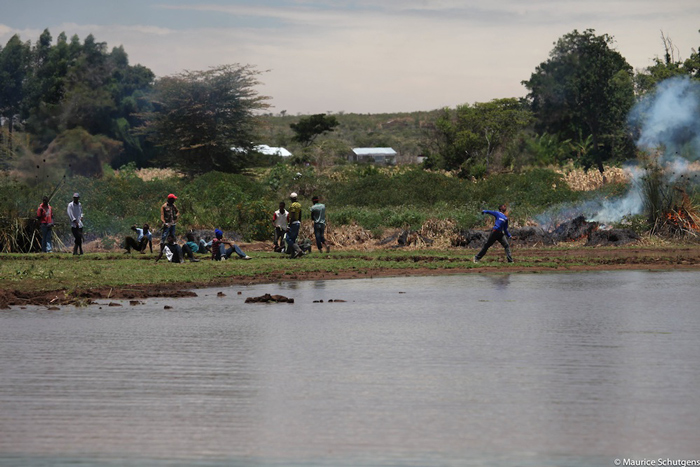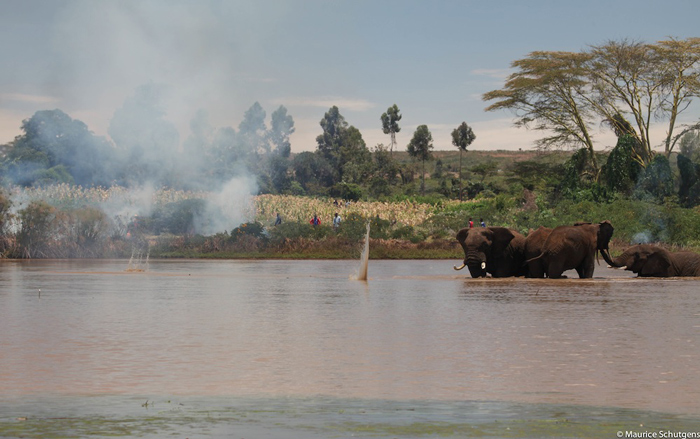It started with a phone call. The man on the other end of the line reported seven elephants stuck in the mud on the community side of the 164km West Laikipia fence near Pesi. The news was not promising – we needed to make a plan – quickly!
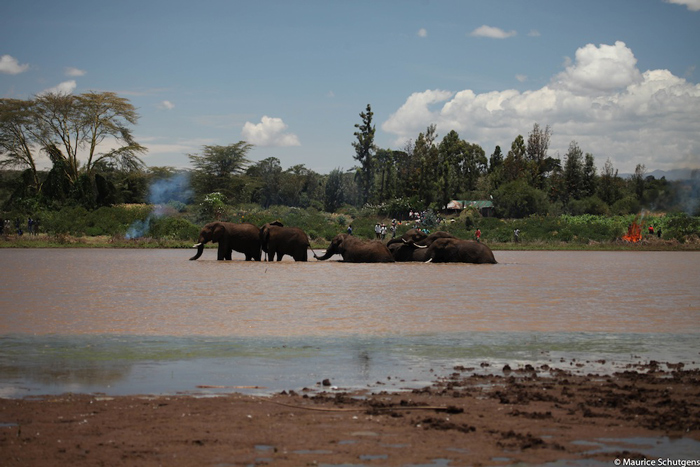
Word had already reached the Kenya Wildlife Service (KWS), and they were on their way to the scene – a two-hour drive from Nanyuki, where Space for Giants (SFG) offices are located. We jumped in a vehicle and headed into the bush.
The story changed as we neared the scene, getting hopelessly lost on the narrow tracks between maize fields. The elephants were not stuck – the community was holding them hostage.
The moment we reached the dam, we were mobbed by several hundred local community members. We spotted the KWS senior warden for Laikipia County trying to placate a group of 50 men surrounding him. He had his hands full.
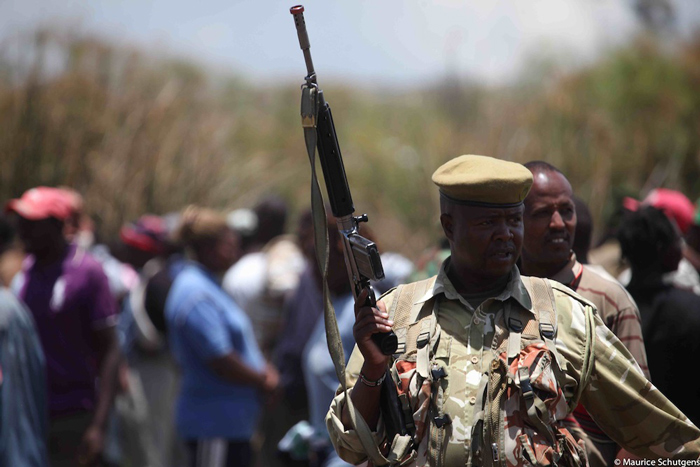
We pushed through the crowd to reach the dam’s edge and assess the situation. One boy of about ten years of age stopped us, “elephants eat my maize,” he mumbled in broken English.

Now we understood. These seven males, all known fence-breaking elephants to SFG researchers, had broken through the West Laikipia fence that is supposed to separate community land from large-scale ranches, where wildlife is tolerated. The elephants had smashed through the fence, entered the community land and destroyed a large crop of maize. The villagers were furious, understandably so. They had seen their livelihoods destroyed before their eyes. They wanted compensation. They wanted these elephants dead.
Human-elephant conflict in the Laikipia area is amongst the worst in East Africa and probably the most severe in Kenya. In 2007, SFG estimated that elephant crop raiding had cost local communities over US$1 million in lost revenue. These losses are catastrophic.
The KWS rangers had the situation under control – but it felt like a time bomb. You could feel the tension in the air. All the villagers were armed with sticks and machetes, angrily demonstrating at the elephants huddled together in the dam no more than 50 metres away. It would not take much to see this situation erupt into violence and bloodshed.
SFG called in support from our partners at Lewa Conservancy and Ol Pejeta Conservancy and chartered a support helicopter from Tropic Air – these elephants would have to be pushed from the dam. Soon a helicopter emerged over the horizon.


The helicopter’s arrival sent the crowd into a frenzy – it was there to help the elephants and not them. The KWS did well to control the crowd. But their increasing frustration was now aimed at the elephants, eager to leave and approaching the dam’s edge. The villagers mobilised themselves and set all the vegetation surrounding the dam on fire. A gang of 30-50 men started throwing stones. The crowd screamed and whistled. The elephants were trapped – and they knew it. They retreated and sought another way out, only to receive the same treatment. The panicked elephants huddled together in the centre of the dam, unsure of what to do as smoke filled the air and stones splashed around them.

There was no way of stopping the crowd from doing this – by now, they numbered at least 400 – a few rangers with guns would not intimidate them. The helicopter attempted to push them away by flying low overhead, but it only fueled their resistance. It was a standoff.
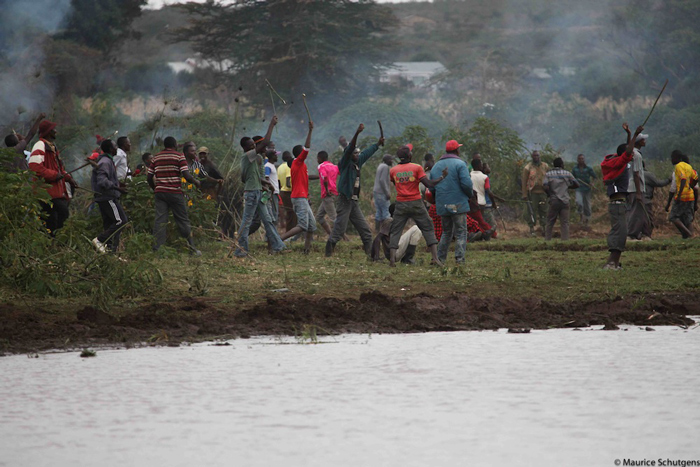
Suddenly one of the elephants – the one that had been attempting to escape for hours already, made his move. It had had enough. It was showered in stones and sticks as it reached the shallows, fires roaring in the background. It charged into the crowd that scattered before it. We lost sight of it immediately amongst the maize.
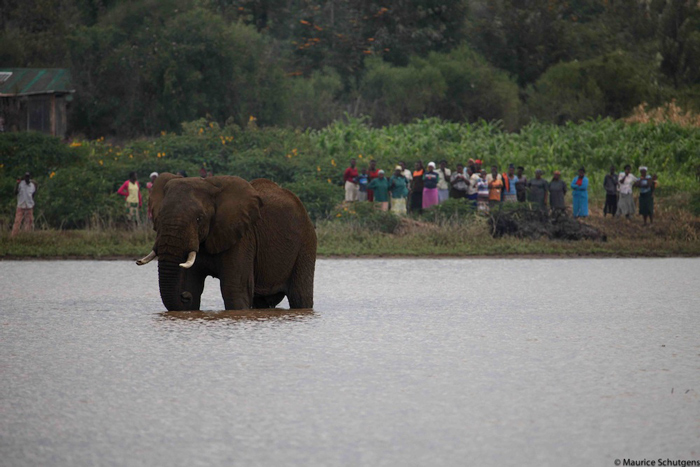
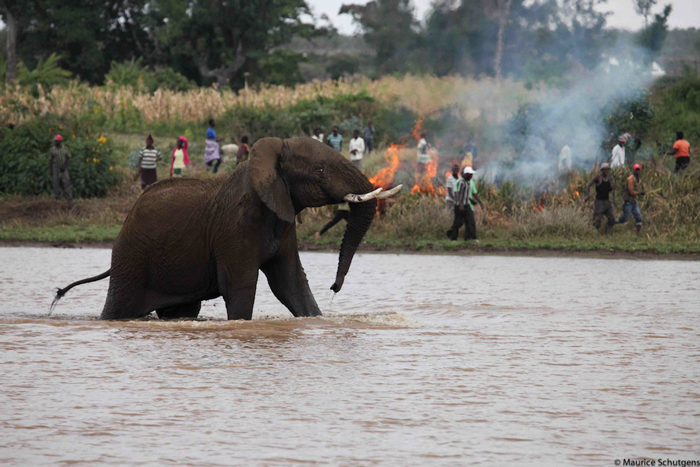
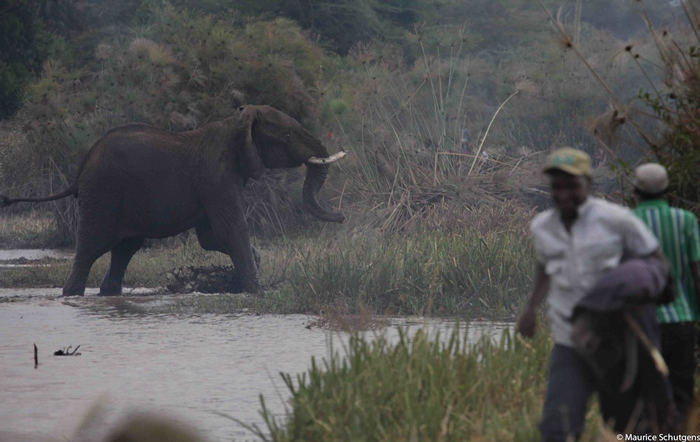
The Tropic Air helicopter reacted quickly, and the experienced pilot managed to steer it away from the fleeing crowd and to safety.
The courage of this elephant seemed to infect the three remaining elephants. As the helicopter returned, the police and KWS helped disperse the individuals trying to prevent the elephants from escaping, and the helicopter guided them out of the dam. Nevertheless, the remaining three elephants were in no mood to move. Stubbornly they huddled together and waited for night to fall. Under the cover of darkness, they slipped away unharmed.
The whole incident was bittersweet. There are no winners here. We are delighted all the elephants got away largely unharmed, but this incident illustrates the true state of affairs in Laikipia County. Local communities living side by side with these giants suffer significant losses daily and have little reason to value elephants. When elephants from Laikipia’s wildlife conservancies raid their farms, their complaints and requests for compensation fall on deaf ears – when an elephant is in danger, there is a monumental response from both the public and private sectors. The inequalities are all too clear.

The solution?
The rehabilitation of the West Laikipia fence. There has never been a more pertinent example of the need for a fence to separate man and beast. In Laikipia, the peaceful coexistence that we as conservationists strive for depends on a barrier made of wire, posts and 8,000 volts. It may not be pretty – but it works.
Space for Giants is an international conservation charity in Kenya through a local charitable trust with an independent board. SFG also focuses on mitigating human-elephant conflict in Laikipia County, securing space for these giants to roam and training the next generation of conservationists.
To comment on this story: Login (or sign up) to our app here - it's a troll-free safe place 🙂.![]()


